-
Posts
3,220 -
Joined
-
Last visited
Content Type
Profiles
Forums
Gallery
Events
Posts posted by Hubac's Historian
-
-
Pure model-making magic!
- Mirabell61, FriedClams, Siggi52 and 4 others
-
 7
7
-
I considered buying a torch like that when I first picked up soldering supplies. I decided, though, to see how easily a conventional soldering iron would work with the Solder-It, silver solder paste that I purchased. There is a generous ratio of flux to colloidal silver solder, with this product, so I found that the smallest amounts make nice joins with a quick touch to the iron tip. Like anything else, it was a process of course-correction to figure out how to use these products correctly.
I do know that the technically correct place to make the joints is along the straight parts, however, at this scale I was having a ton of difficulty getting my wire ends to meet nicely; I was either too long, resulting in a bowed straight, or too short, necessitating an excess solder-fill. I also made the first batch of preventer plates too long, and I wasn't using enough solder paste on the back side to bolster the join enough for bending/shaping.
Dan Pariser suggested that he likes to cut meeting ends on a long bias so that they overlap like a scarf joint; more surface area produces a stronger joint. As usually happens with this kind of thing, doing something like snipping wire ends hundreds and hundreds of times has a way of sharpening your skills and discernment for where precisely to make a cut. At this point, I could fairly easily make those wire ends meet exactly where they need to.
I do appreciate the correctness of what you guys are suggesting, but the method I have arrived at is working for me in this scale, and producing the clean results that are a higher priority to me than rigorous accuracy of manufacture. In larger scales, I absolutely would give the "correct" way a go again.
-
As always, Kevin, your knowledge bank is astounding. I think you are right about this wire’s manufacture, but given the relatively light gauge, it has been pretty easy to pull taught around the pin-formers. What is essential to this process is a pair of parallel pliers. I’m indebted to Druxey for that tooling tip!
As always, Bill and David and Michael, and everyone who is looking-in - I appreciate the support!
- FriedClams, mtaylor, Baker and 3 others
-
 6
6
-
All beautifully coped together.
- hollowneck, mtaylor and Canute
-
 3
3
-
I can’t escape the fact that I continue to fail at this chain-making exercise. As the old maxim goes, though, every failure is one step closer to success.
I’ve now thrown away two whole batches of chain preventer plates. While I was quite right to follow Andre Kudin’s example, for the process of their manufacture, I eventually discovered that that process is not entirely transferable from 1:48 to 1:96 scale.
After forming his basic links, Andre solders them closed at one end, and then places the closed link back onto the two pins so that he can crimp an eye on each end with his round pliers.
Well, the 28 gauge brass wire I’m using does not provide enough surface area for a strong enough bond to survive the crimping. My success to failure ratio was pretty poor:
So, my lesson from that exercise was that I needed to do the crimping before soldering one end closed:
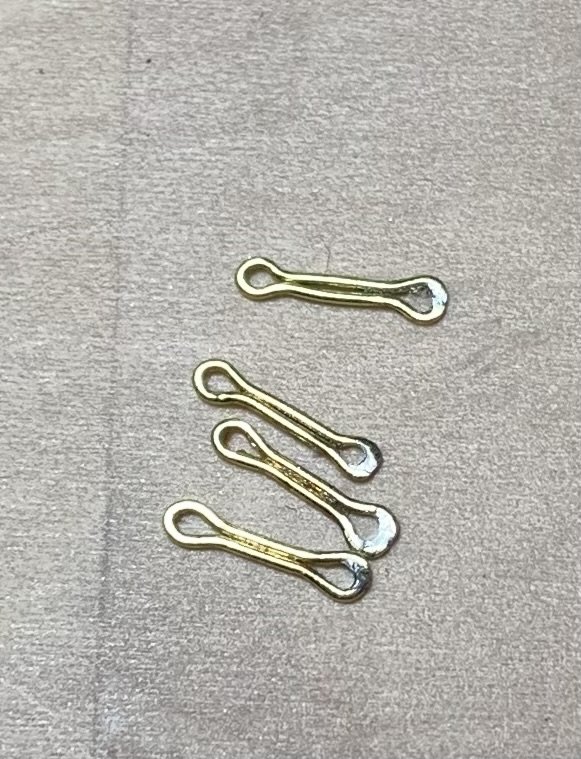
These soldered loops will be the lowest end of the chains, bolted into the wales. That way, I could induce a series of bends into the upper half of each preventer plate, so that they could overlay the next small link:

Above I’m just using another preventer plate to check that the bends I’m making are sufficient.
So, I spent a good chunk of time cleaning up the solder and inducing bends into the remainder of the preventer plates. The solder joint will be re-enforced with the CA glue that fixes the pin-bolt in place:
With that out of the way, I could make a new, slightly closer-spaced pin jig for the next small link, which is only crimped on one end, where it seats beneath the preventer plate.
Now that I have a process that I know will work, and now that I’ve had all of this practice, these next links should go fairly quickly:
I have a lot of these to make, solder and bend - about 70 to ensure I can use the best. This has all been a colossal PITA, but it was really important to me that all of this look very clean and uniformly shaped. In the process, I have acquired some very valuable metal skills that will only enhance this and future projects.
That said, I am going to experiment with using black nylon thread of an appropriate diameter to connect the deadeye strop loops to the small links. This would essentially be a variation on the way that the stock kit represents these links, but I will do individual chain loops that draw tight with some form of slip-knot that I can pull up and hide behind the deadeye strop.
Andre had a great method for producing these variances, but it is all just that much more tedious in the smaller scale.
The advantages of doing this are several. So long as there is not a jarring difference in appearance between the black thread and the blackened metal, it will save me tremendous amounts of time. It also simplifies the difficulty of accurately measuring and keeping track of a series of increasingly longer links as the shroud angle increases from fore to aft. Lastly, it greatly simplifies the placement of the deadeyes because I can add the retaining strip, in advance, and it also makes it much easier to locate and properly secure the bottom two links. Hopefully, that will work out.
Well, I keep saying that I’m going to get back in the swing of the project, and then I get sucked into coaching another basketball team - now my son’s Spring rec team. Meanwhile, the Rangers and Knicks are just too compelling to ignore this post-season. At least for now, I can see the end of the tunnel for these chains, which is tremendously motivating, and then I can return to the more immediately gratifying work of outfitting and arming the main deck.
Thank you all for taking the time to look back in on This Old Build. More to come!
- Nek0, Chapman, BLACK VIKING and 16 others
-
 19
19
-
-
That all sounds reasonable to me, Eric.
-
This is a brilliant piece of work, Matiz, and an incredible accomplishment!
- mtaylor, Keith Black and cotrecerf
-
 3
3
-
-
-
This all looks great Eric. I like your aft increase in wale sheer. I’m debating whether it makes sense to have a corresponding increase in the middle band of wales, as the sheer would have run parallel. The upper main wales - at the juncture of the upper bulwarks are pretty fixed, although one could add to to top edge of the upper most wale and feather it back. It mY not really be worth all of that extra effort, though.
- Bill Morrison and EricWiberg
-
 2
2
-
Beautiful carving and a fascinating display!
- HAIIAPHNK, mtaylor and Keith Black
-
 3
3
-
-
Or, can you simply wash back the grey a but with a little solvent? Always test in a little scrap decking, or the underside of the actual decking, if it’s not already glued in.
-
Are you considering balsa fillers for the lower (below waterline) portion of the bulkheads? As you say, she has a very bluff bow and the bulkhead spacing is a little sparse. Fillers would make the under-layer of planking much easier to fair and secure.
-
-
Ian, you continue to amaze with this build! I was just talking it up to my club, last night, so you may soon have a few new on-lookers.
The bulwark sweep, previously, did not jump out at me as problematic, but after modification I can see what an improvement in practicality and aesthetics you have made. Well done!
-
Well, the 6th grade CYO basketball season has drawn to a close and our team succeeded beyond my wildest dreams: we went 13-1, and captured the Manhattan division title. Our second and final loss came in a division matchup with the Bronx winners. We played a gritty first half, and kept it close, but made mistakes in the second half. We were simply overmatched. Nonetheless, it was a wonderful and extremely rewarding season. The Knicks, on the other hand, continue to surprise, so my attentions remain somewhat divided.
That being said, I am lately looking to focus more on model building. I’ve completed all of the fore, main and mizzen channel deadeye strops. Although Andre Kudin’s particular method is definitely more efficient with less clean-up - he solders the lower strop loop at a neatly cut joint - I stuck with the R.C. Anderson overlap method I had been using because the strops were coming out uniformly, nicely shaped, and strong. I will change my approach for the deadeye strops in the tops.
Next in order to be made are the chain preventer plates. One of the key differences between what I had first tried, when making the chain preventer plates, and what Andre does is that Andre bends each plate from an individual length of wire, rather than try to economize on material by wrapping a longer length of wire, many turns, around an appropriately sized former.
When you do the latter, for one thing - you may succeed in crimping the continuous loop neatly around the former, but it is nigh impossible, after parting the links to get the links off the former without pulling them all out of shape.
The other issue with parting the links in this way is that you end up with one neat flush end and a pinched end, which leads to a weaker solder joint.
What I am after are uniformly straight chain links, free of odd kinks, and sloppy joints. To that end I set up a simple bending jig like the one I see in Andre’s videos. Following is a series of screen captures from his YouTube videos. This particular video is either #13 or #16, in the series, if I remember correctly:

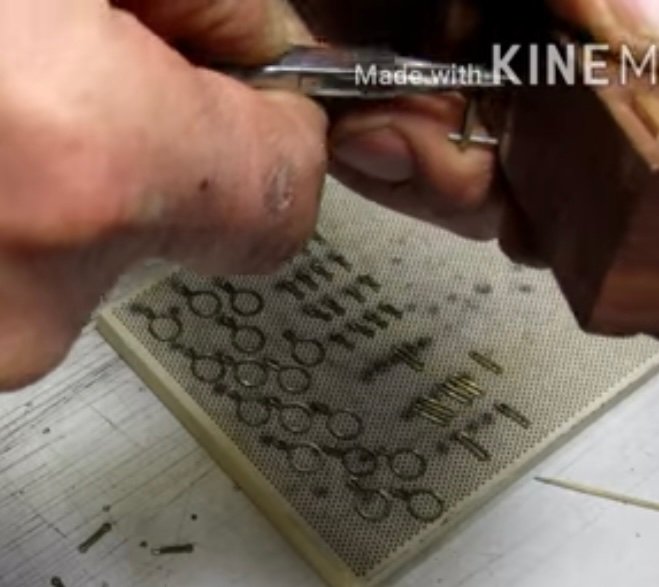
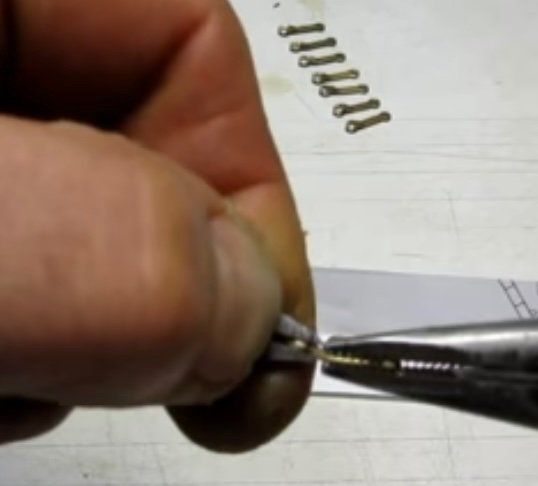
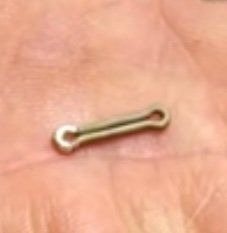
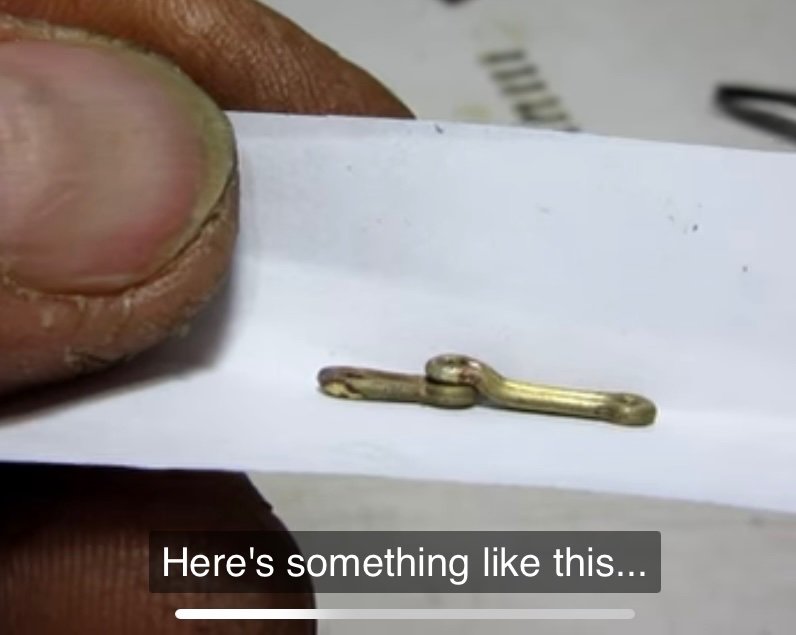
And following along, I first pre-bend short lengths of wire around a drill mandrel:
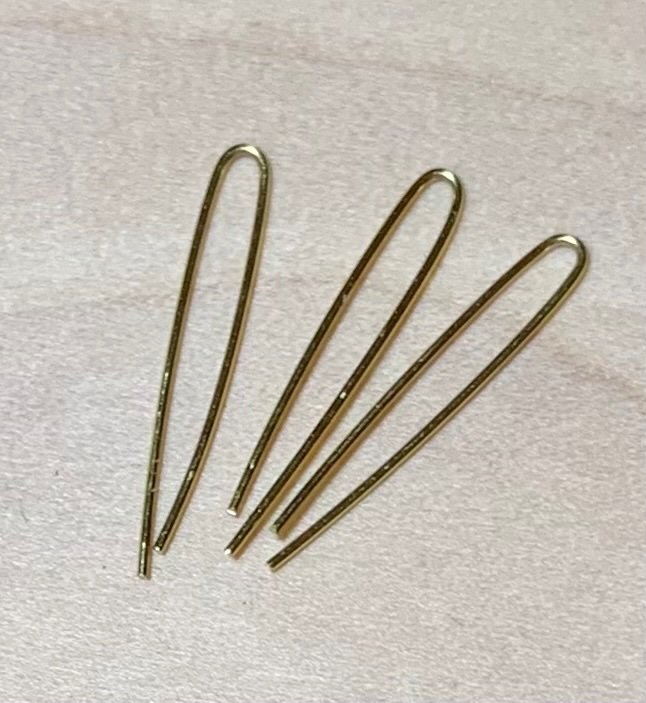
I’ve placed a shallow spacer beneath the link area, so that the ends will be slightly raised and easier to crimp with my parallel pliers:
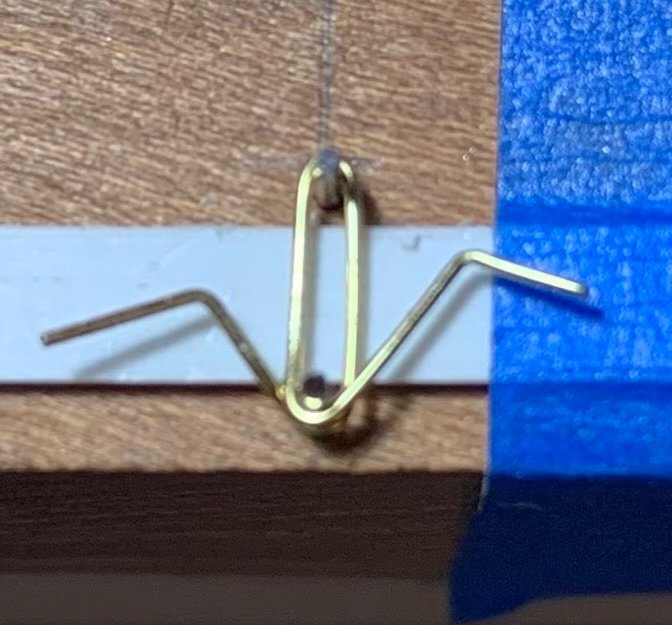
I crimp snug around the upper pin, then use my pliers to pull each end snugly around the lower pin. I then crimp around the lower pin:
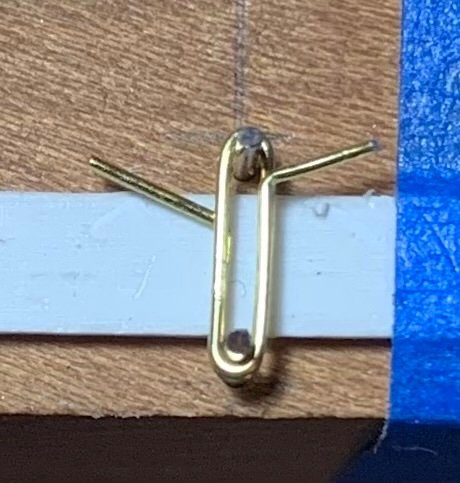
I can then remove the link, and flush-cut each side of the link. A little tweezer/finger manipulation creates a nicely closed link:
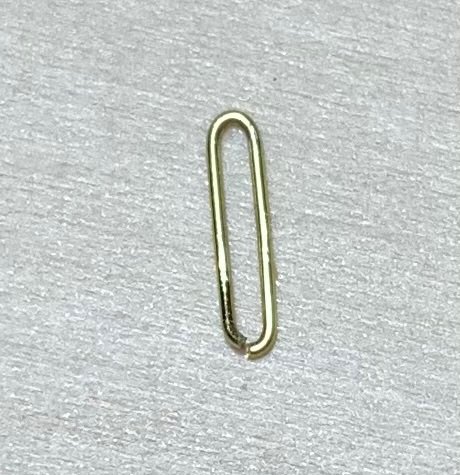
Silver solder paste has proven to be really great as I can control its application with the tip of an Exacto. A touch to the iron, and I have nicely soldered joints that only require a little cleanup:
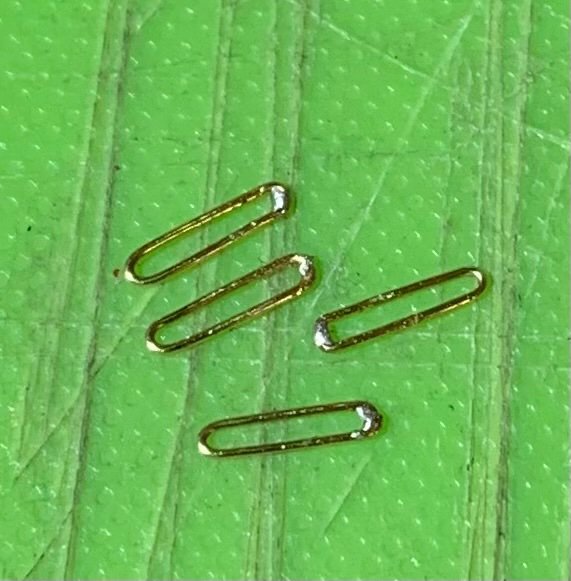
Now, Andre puts the soldered loops back over the two-pin jig and uses his round-nose pliers to crimp eyes at each end. I found, though, that the joints with this 28 gauge wire simply failed when I tried this:

Alternatively, I found that I could place each link end over the lower pin, hold the outer end with a tweezer, and use my round nose plier to crimp around the single pin. This worked beautifully:
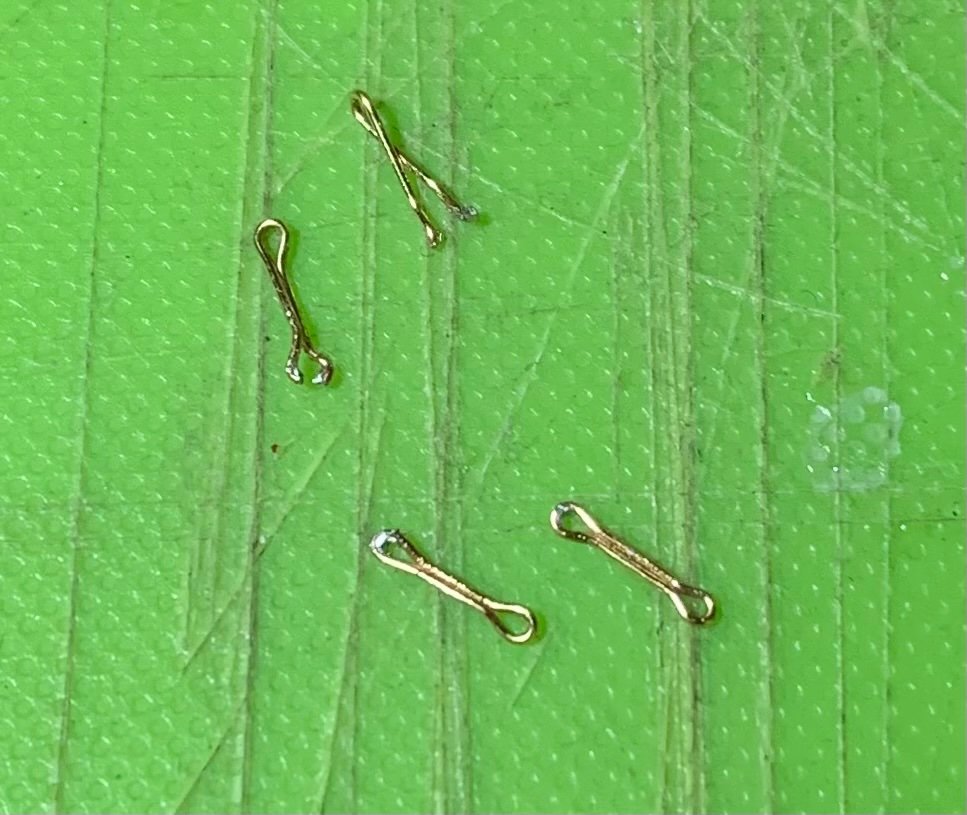
Now, It’s a simple matter of doing that over and again about 60X.
It is, of course tedious, but satisfying to achieve the result I am after.
More to follow!
Best,
Marc
-
Just awesome, Bill. A beautiful display!
-
It’s funny - I was wondering at the necessity for the card re-enforcements, but then I got a better sense of the scale with your arm in one of the previous shots. This is a fairly large hull.
As always - great progress, Gary. Hull looks sweet!
- Glen McGuire, Canute, Retired guy and 4 others
-
 6
6
-
 1
1
-
I echo the sentiments of all above - simply extraordinary!
- kirill4, Bruma and Keith Black
-
 2
2
-
 1
1
-
-
-
On 3/7/2024 at 8:15 AM, Bill97 said:
Marc you commented that a 3 or 4 butt shift would look better for deck boards, and I agree. From your study what are your thoughts about board lengths? Anatomy of the Ship indicates boards were in the 29-30 ft length. Other references I have read suggest board lengths that long would have been difficult to sustain for ship carpenters. Tall straight trees not always available. Longer boards also cumbersome to maneuver and store in hold. Basically suggesting board lengths would vary throughout the deck as repairs and replacements were carried out over the years.
Well, when simulating a deck with underlying framing, you have to first determine the likely spacing of the beams. The hatchways are always a useful starting point for figuring this out. Once you have a reasonable layout - and I don’t think this necessarily has to exactly match that of the Endeavor replica, it just has to be plausible and regular - you can then figure out, at scale, where planks land on beams within the 25-30’ range.
This is one of those things where, since you’re not making a rigorous, fully framed and exact copy of the original ship, there is some latitude, IMO, in executing the details. The goal is an improvement over stock, and that the execution not be jarringly wrong.
Of course, the Endeavor is an example of a type of ship called a “Whitby Cat.” If you did want to produce a fully authentic deck layout, I don’t imagine you would have too much difficulty finding original construction drafts that would show the deck framing.
It’s really up to you, as to how far you want to take it.
- jpalmer1970 and Ian_Grant
-
 2
2



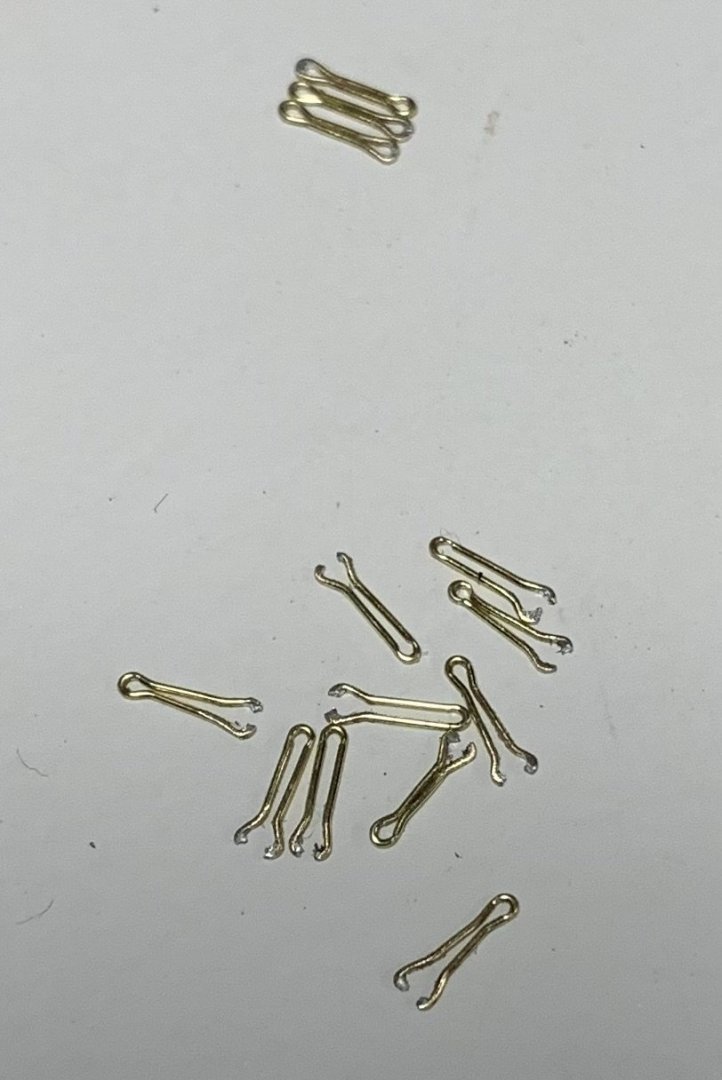
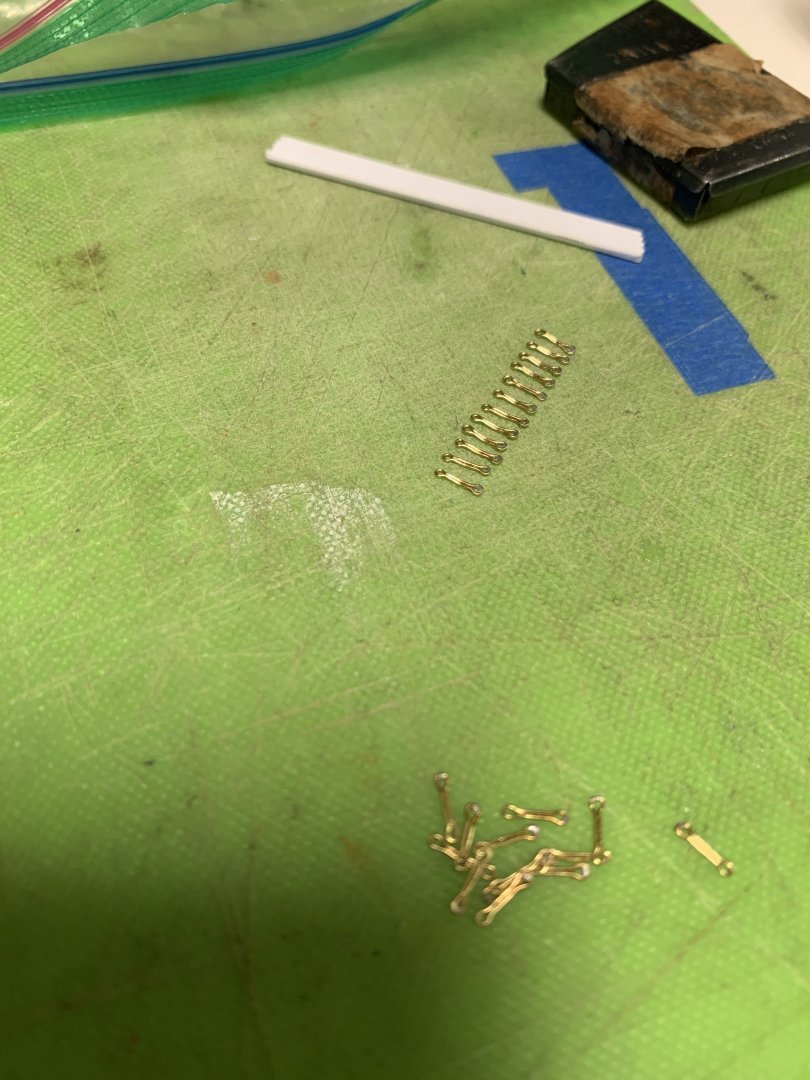
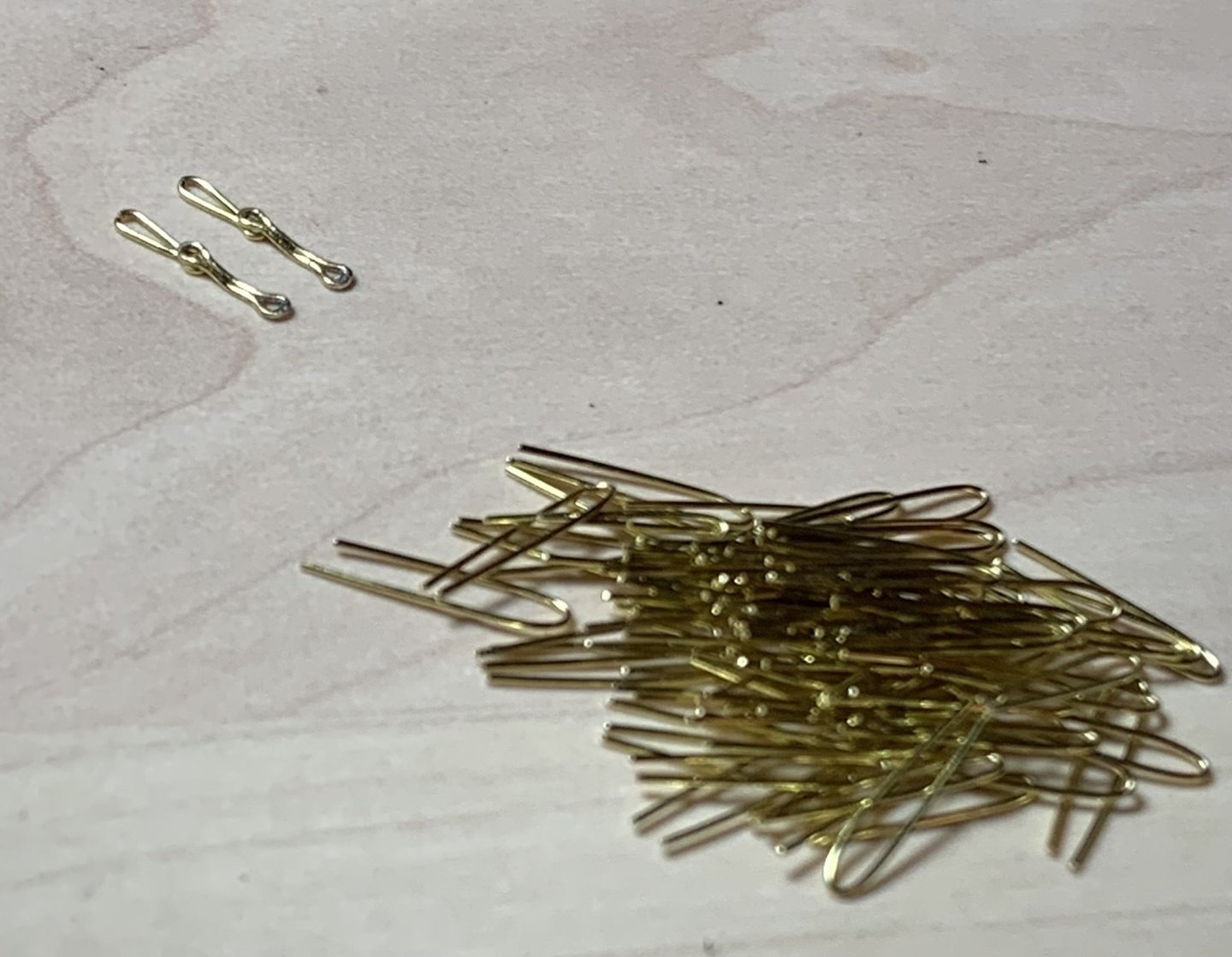
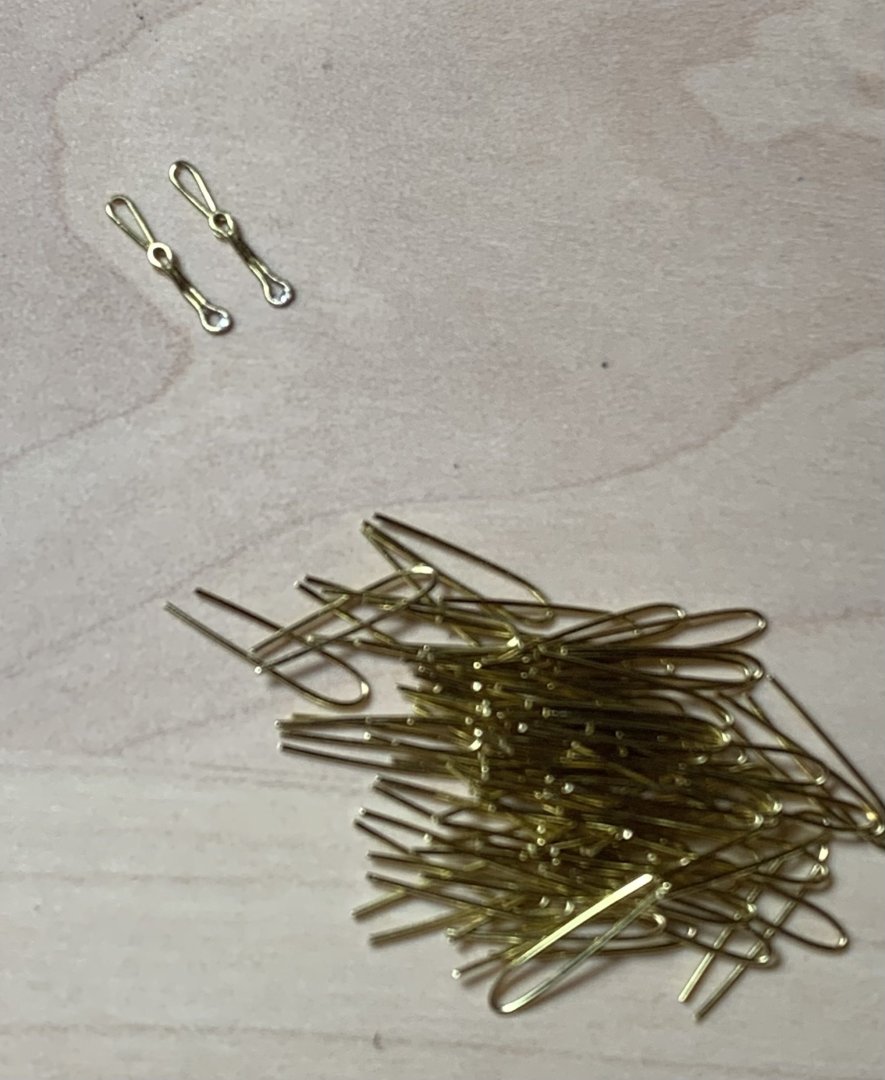
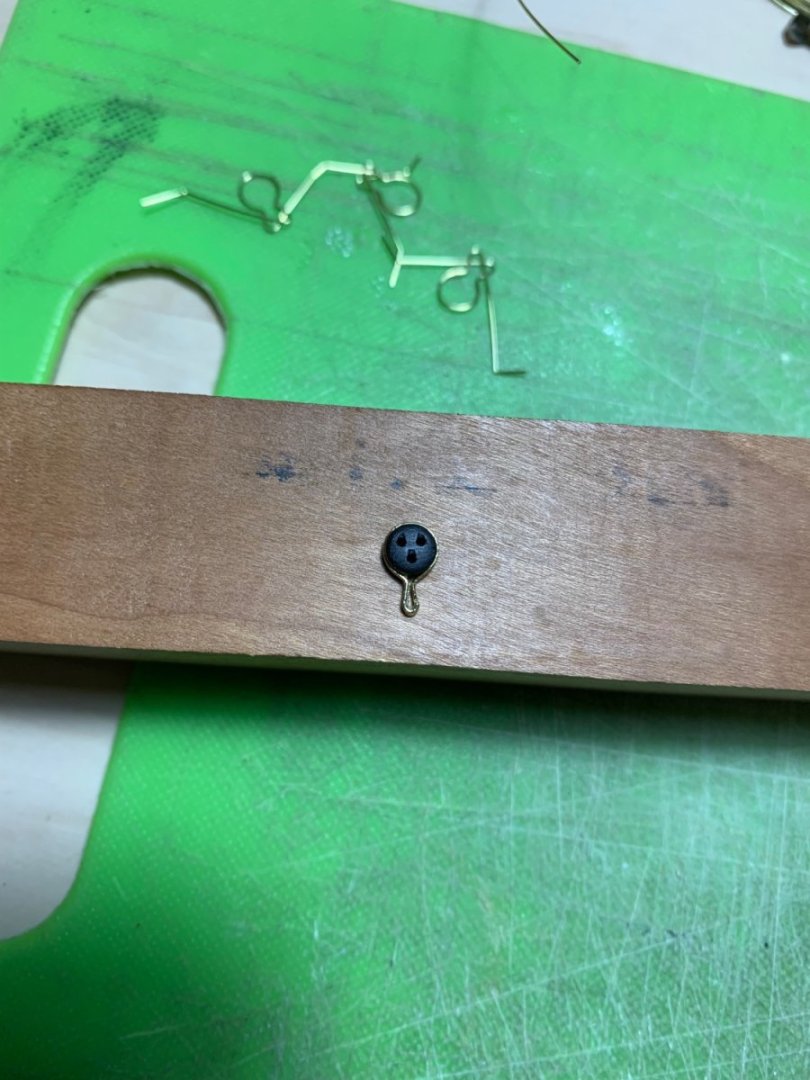
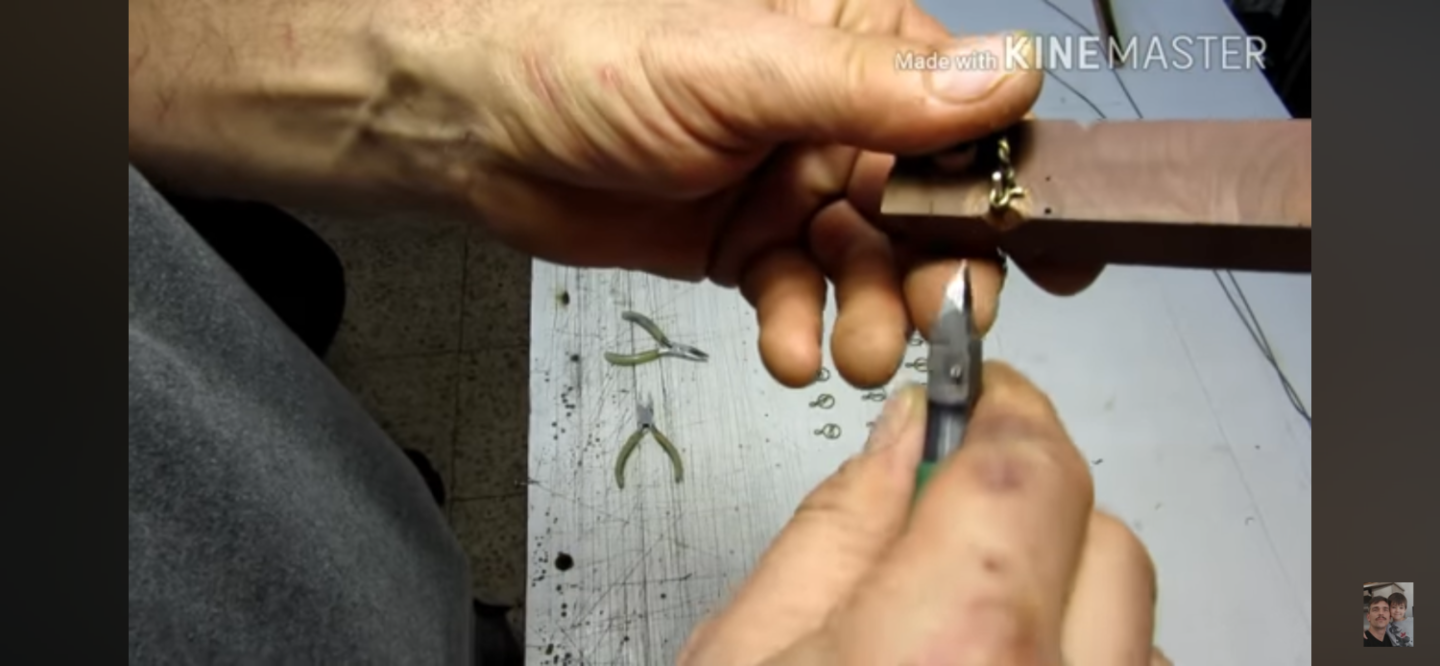
HMS Indefatigable 1794 by Blue Ensign - FINISHED - Vanguard Models - 1:64 scale
in - Kit build logs for subjects built from 1751 - 1800
Posted
They’re a pretty pair, together B.E., and you emerged like your most recent project’s namesake, Indefatigable, and ready for the next project. Many congratulations on yet another remarkable build!